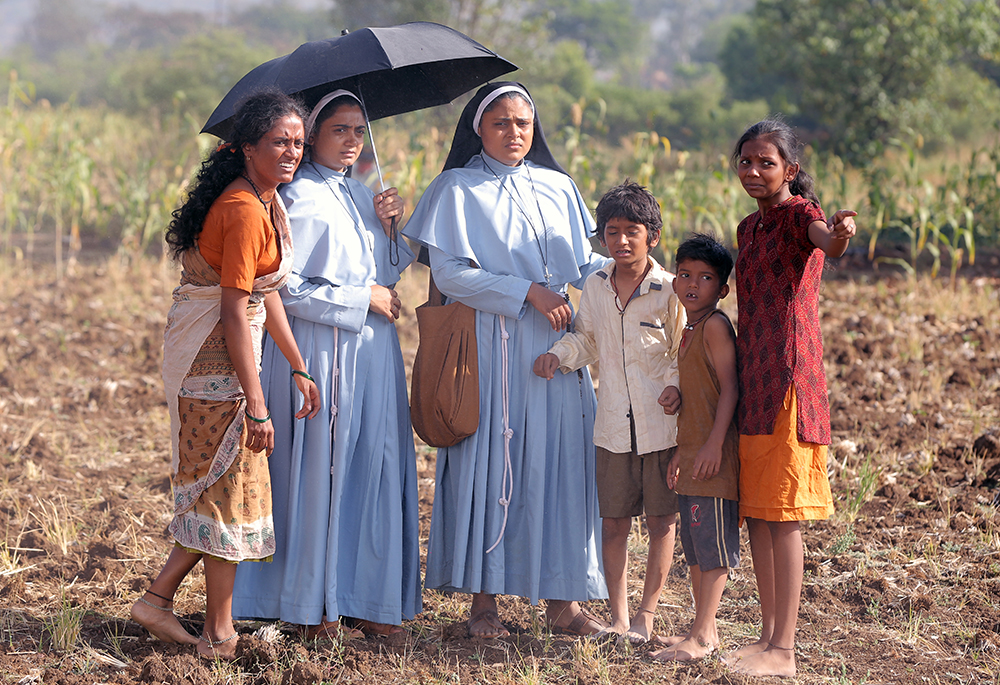
A still from the movie "The Face of the Faceless," where Sr. Rani Maria, a Franciscan Clarist nun (played by Vincy Aloshious), encounters exploitation and oppression of low-caste landless laborers in central India (Courtesy of Shaison P. Ouseph)
A feature film on a martyred nun is changing attitudes toward missionaries in India while enhancing dignity and confidence among women religious, according to laity and religious who spoke with GSR.
"I have always thought the job of a missionary is to convert people to Christianity. But this movie explains real conversion," said Joseph Thoombanal, a retired soldier who watched "The Face of the Faceless," a biopic on Franciscan Clarist Sr. Rani Maria Vattalil.
The nun was killed in 1995 by an assassin hired by landlords and moneylenders who resented her work among landless laborers in the central Indian state of Madhya Pradesh. The Catholic church beatified her on Nov. 4, 2017.
Thoombanal and his wife, both in their early 60s, watched the nearly two-and-a-half-hour film in Kottayam, a Christian stronghold in Kerala, the nun's native state in southwestern India, where the film was released on Nov. 17.
The movie, in Hindi and Malayalam languages, sold out in more than 70 theaters in Kerala. The movie, dubbed into Spanish and French, has won more than 30 awards in various film festivals across the globe, said its director, Shaison P. Ouseph.
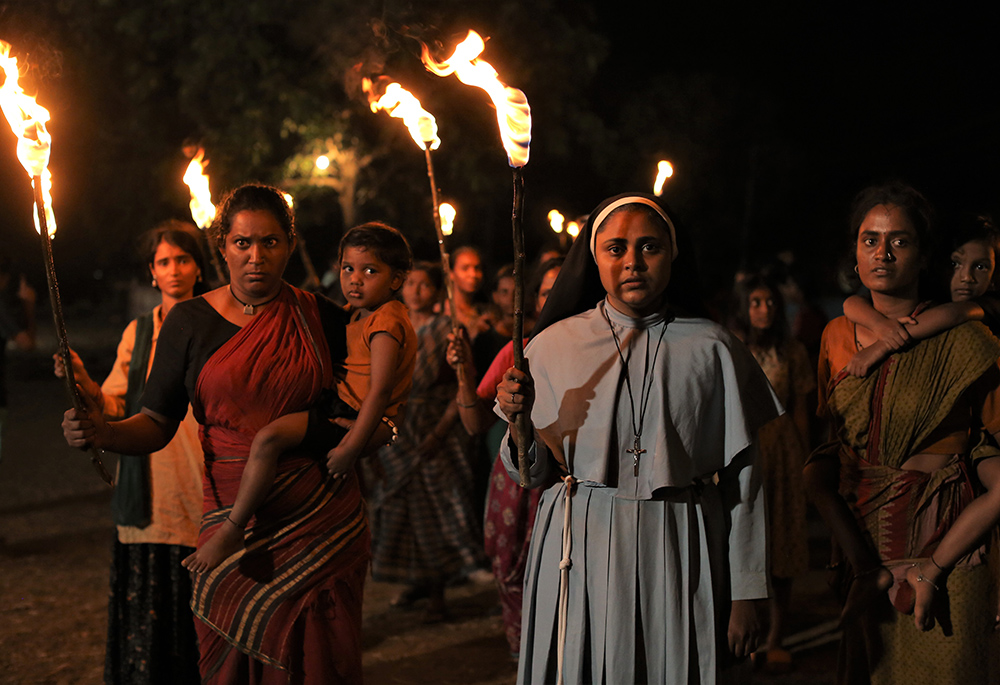
Sr. Rani Maria organizes village women against their oppressors and moneylenders in a still from "The Face of the Faceless" film. (Courtesy of Shaison P. Ouseph)
According to the movie's website, the film "depicts the trials and tribulations of a woman who rose above the boundaries of her religion, realized the universal oneness, and committed her life to women's empowerment."
"This is a story of ultimate forgiveness, sacrifice and nonviolence," Ouseph told Global Sisters Report over the phone. He said his inspiration to do this movie was its "convincing story," explaining the true picture of a missionary nun who had dedicated her life to social transformation. "This is the type of conversion the missionaries are involved in," Ouseph, a former seminarian, added.
Cardinal George Alencherry, recently retired head of the Syro-Malabar Church who promoted the film before it was released, said the message of forgiveness and sacrifice, as depicted in the movie, will definitely make an impact.
The film narrates how Rani Maria, as she is known, braving life-threatening incidents, united villagers against landlords and moneylenders who had enslaved them for ages.
Thoombanal pointed out that Rani Maria did not convert people from one religion to another "but liberated them from oppression and slavery to freedom and dignity, and helplessness to empowerment." He also expressed the hope that the film will attract young people to missionary vocation.
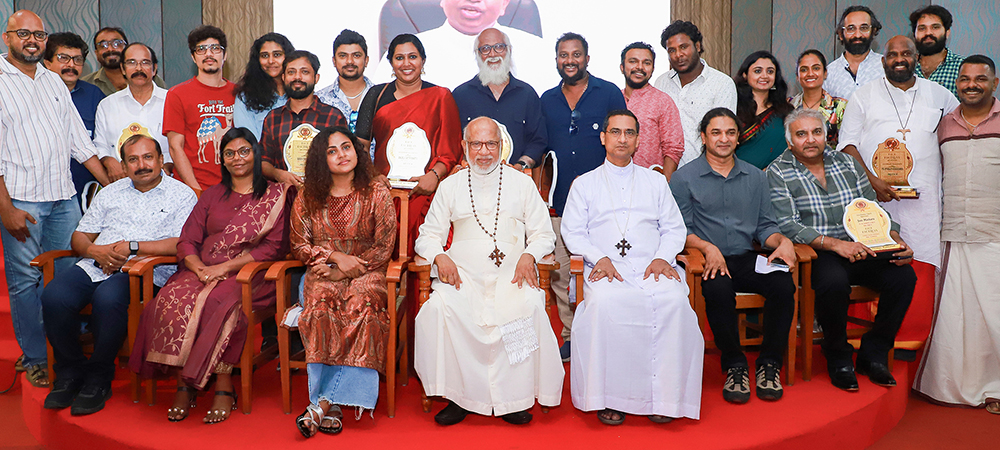
Cardinal George Alencherry, sitting center, is pictured with the crew of "The Face of the Faceless," including Vincy Aloshious, to the left of the cardinal, who plays the role of Sr. Rani Maria; director Shaison P. Ouseph (sitting, second from right); producer Sandra D'Souza Rana (sitting, second from left); and Fr. Stanley Kozhichira (row behind the cardinal, second from right) who plays the role of a villain in the movie. (Courtesy of Shaison P. Ouseph)
Apostolic Carmel Sr. Maria Nirmalini, leader of India's more than 130,000 Catholic men and women religious, said Sr. Rani Maria was a true "champion of voice for the poor and the vulnerable in society" and has become an icon of women religious in India.
Appreciating the film's production team for venturing into the project, Nirmalini said the depiction of Sr. Rani Maria's life and death and the act of her sister and mother forgiving the assassin will move anyone's heart.
"The movie has brought out the depth of forgiveness in its truest sense," said the president of the Conference of Religious India, the national association of India's more than 1,000 major superiors.
Rani Maria's family members are "indeed the Jesus of today for the lost and least ones on the margins," Nirmalini told GSR.
The moviemakers claim the film depicts the extraordinary interplay of mercy, love, sacrifice and forgiveness "as a miraculous force to dispel ignorance and oppression."
Advertisement
Sr. Ardra Kuzhinapurathu, head of the Catholic religious in Kerala, said the film "has powerfully depicted the actual situation of a missionary sister in mission fields of India and the struggles and challenges she faces in a very vulnerable situation."
Kuzhinapurathu, a member of the Sisters of the Imitation of Christ, a congregation under the Syro-Malankara Church, describes the film as "a powerful weapon that leaves lasting impressions on viewers."
"The most touching scene was the forgiveness by her sister, a nun and their mother," Kuzhinapurathu, who watched the film on the first day it opened, told GSR.
Rani Maria's sister, Sr. Selmy Paul of the same congregation, visited the assassin, Samandar Singh, in prison and tied a rakhi (a bracelet of colored thread that sisters tie on their brothers' wrists on a Hindu festival to seek the brother's love and protection). Rani Maria's mother also accepted Singh when he visited Kerala and kissed his hand.
Singh had stabbed Rani Maria more than 50 times in a moving bus at a remote forest area in Dewas district in central India on Feb. 25, 1995. She was 41 then. Her canonization began in 2003.
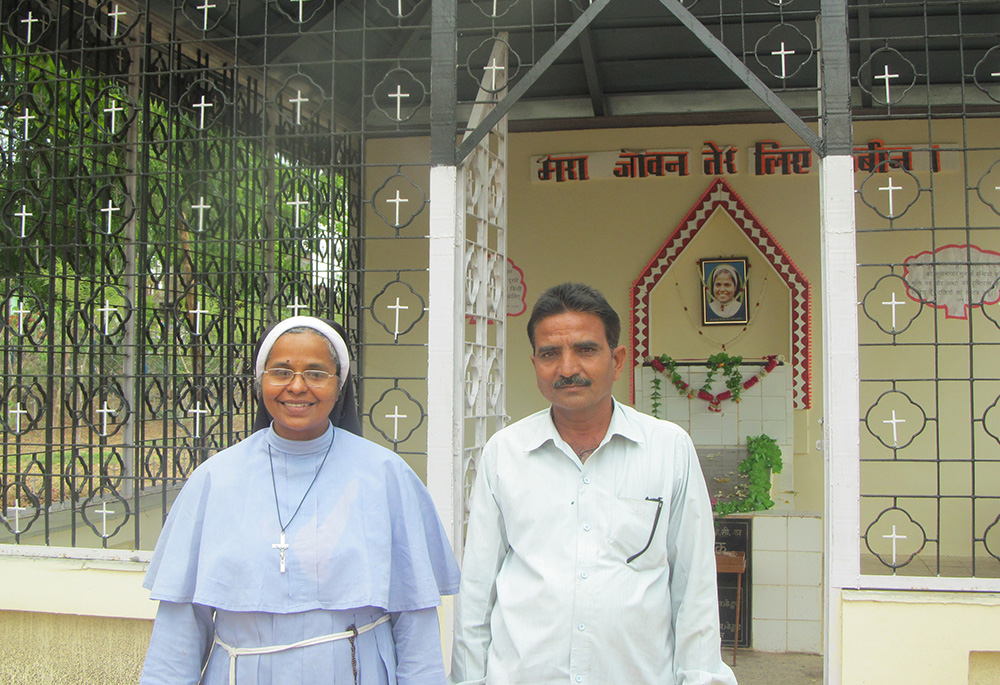
Sr. Selmy Paul and Samandar Singh pose in 2015 in front of what was Clarist Sr. Rani Maria Vattalil's tomb before her remains were exhumed and transferred to the interior of Sacred Heart Church in Udainagar, India. Singh, who stabbed Sister Rani Maria to death in 1995, attended her November beatification. (CNS/GSR/Saji Thomas)
Singh was sentenced to a life sentence but was released in 2006 because of his good conduct and pleas from Rani Maria's family that pardoned him.
"Their love and affection have totally changed my life," Singh told the media.
Kuzhinapurathu said Rani Maria's family witnessed Christianity's love and forgiveness. "I am sure thousands of people who watch the picture will treasure the scene in their hearts."
She, too, believes the film would give young people and their parents "a clear vision about missionary vocation and encourage them to respond to it."
The film has another positive impact. Kuzhinapurathu said the first Indian feature film on a Catholic nun has brought more confidence and dignity to women religious in India, since the movie helps people understand their mission.
Claretian Fr. George Kannanthanam, a social activist, recalled that Ouseph had left the same congregation with a passion for working in the film field. He is now a Claretian lay associate.
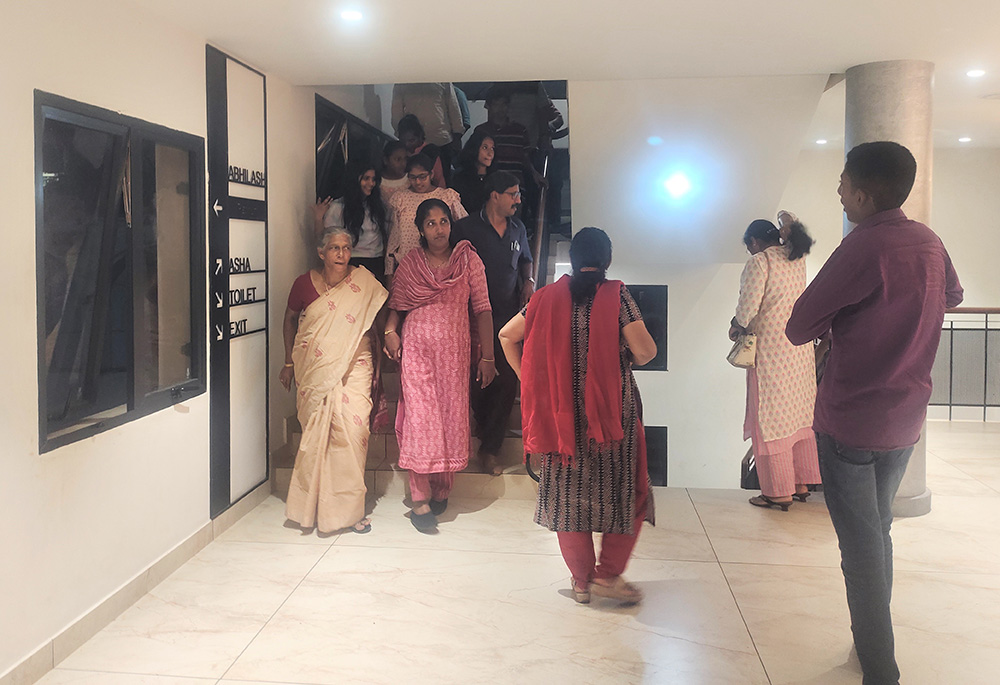
People are pictured coming out of the theater after watching the film "The Face of the Faceless," a biopic on Franciscan Clarist Sr. Rani Maria. (Thomas Scaria)
Kannanthanam said the film could become "the best evangelization tool if the church promotes it wholeheartedly." He expressed the hope the film would inspire men and women religious to take up challenging missions.
Jisha Jose, a young woman, was thrilled to watch the heroism of a nun in a hostile situation.
"She was truly the face of the faceless and an embodiment of empathy, love and service," Jose told GSR. "The film is an inspiration for many like me," she added.
Holy Spirit Sr. Mary Philomina said the movie has enhanced the dignity and confidence among Catholic nuns. The superior of a convent in Payyanithottam near Kottayam, who watched the movie with her sisters and the parish community, said it strengthened her vocation as a nun.
Although the movie depicts Rani Maria as the face of the landless laborers, the nuns feel they are the faceless. Philomina said, "The Catholic nuns are projected as faceless people in the modern age, with growing negative propaganda about their lives and missions."
Philomina said she is happy that the movie has restored "our dignity as religious nuns and reasserted our vocation as religious missionaries."
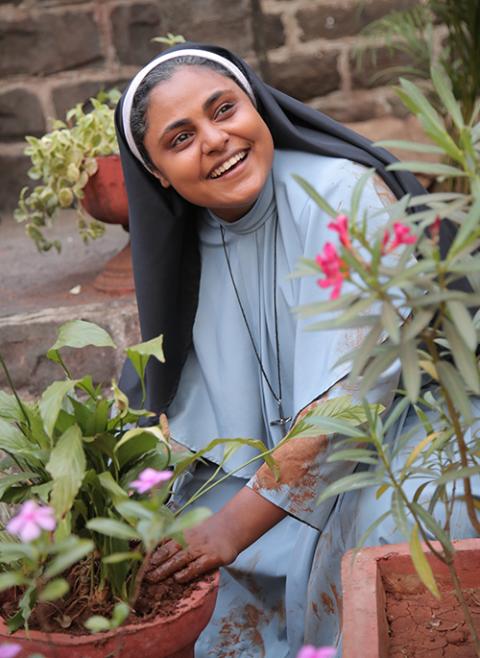
Vincy Aloshious, who plays the role of Franciscan Clarist Sr. Rani Maria, in a still from the movie "The Face of the Faceless" (Courtesy of Shaison P. Ouseph)
Philomina said the movie has changed how lay people look at Catholic nuns. She commended the crew and director for researching "the life of a missionary nun in remote villages and beautifully depicting the lives and mission of our sisters."
Sebastian Abraham, a layman who watched the movie with his wife Lissy, said the movie depicts Rani Maria as a social activist but fails to highlight her spiritual life. "This was a negative side of the movie," he told GSR.
However, his wife, a teacher, said the film has helped her respect nuns who work in remote villages and their challenging missions. "Jesus was a revolutionary as well, and Rani Maria was a follower of him," she said, and added, "Work is worship."
The movie was based on a biography written by layman Babychen Aerthayil, From Pulluvazhi to the Path of Holiness, which traces Rani Maria's life from her birthplace, Pulluvazhi, a village in Kerala, to her religious life, missions and death.
The movie was produced by Sandra D'Souza Rana and Ranjan Abraham under Tri Light Creations. Vincy Aloshious, an award-winning actress in Kerala, played Rani Maria, and Fr. Stanley Kozhichira, the president of Signis Asia, acted as a villain.
Franciscan Clarist Sr. Tessy Jose said most nuns in her congregations in Kerala have watched the movie and are happy about the "true depiction" of Rani Maria. The congregation has more than 7,000 nuns who work all over India and abroad as members of 24 provinces.
"We are proud that one of our sisters has shown that social empowerment is the real conversion," Jose told GSR.







